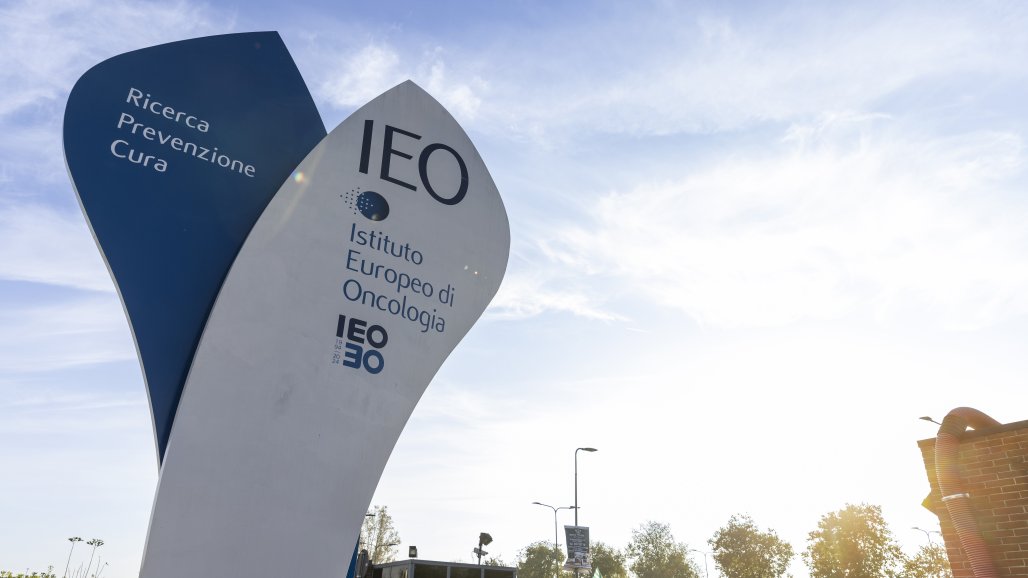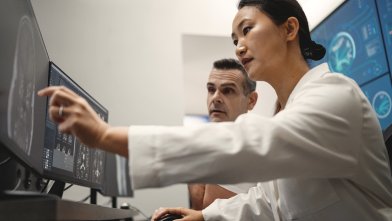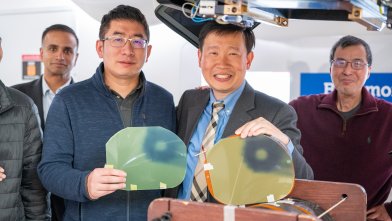At the European Institute of Oncology (IEO) in Milan, Italy, the introduction of the ProteusONE compact proton therapy system has marked a significant leap forward in their comprehensive cancer care offer. This article brings together the voices of three leading IEO experts, who share, in their own words, how ProteusONE is transforming cancer patient outcomes, institutional reputation, and the future of oncology at IEO:
- Prof. Roberto Orecchia, Scientific Director and Head of the Imaging and Radiation Science Department at IEO and Emeritus Professor at the University of Milan
- Prof. Barbara Alicja Jereczek-Fossa, Chair of Radiation Oncology at IEO, full Professor at the University of Milan, and President-Elect of ESTRO
- Marco Liotta, Medical Physicist at IEO
Proton therapy as a strategic asset for innovation and reputation – the Scientific Director’s view
Imaging & Radiation Sciences, discusses IEO’s strategic decision to acquire the ProteusONE proton therapy system to expand the center’s radiotherapy services. As he explains: “Establishing a proton therapy center was seen as an opportunity to enhance the institute’s reputation, not only at the local level within our region, but also nationally, given the limited number of such centers in Italy, as well as across Europe and internationally. Certainly, having proton therapy available increases the global attractiveness of the institute, as we’ve seen in this first year of operation”.
IEO’s decision to invest in proton therapy was rooted in its commitment to innovation. The acquisition of the ProteusONE system not only “enhanced the institute’s local and international reputation” but also generated a positive halo effect on conventional photon radiotherapy services and other possible alternative treatments: “Certain patients who came for proton therapy have actually received equally effective treatments using conventional radiotherapy with photons. As a result, expanding the range of services offered also creates a positive ripple effect across all possible alternative treatments.”
Prof. Orecchia emphasizes how pediatric tumors but also many other types of cancers benefit from the high precision of proton therapy. “One of the most established applications is in pediatric tumors, but many other tumor types can benefit from such high-precision treatment. Clinical judgment should guide each decision.” He also underscores the importance of a forward-looking technology partner when deciding to build or to expand a proton therapy center: “IBA has a long experience in the development of accelerator machines, especially high-energy cyclotrons. The company has made many innovations in proton therapy and what we found especially important was that the model that we acquired, which is ProteusONE – a single room facility – was specifically designed to be integrated within an existing department. IBA is a company that goes beyond just selling the machine; it also provides a program of research and development, which will offer new features in the coming years, for example, DynamicARC* therapy, and in the possibly more distant future, FLASH Therapy may also be introduced.”
Watch Prof. Roberto Orecchia’s full video here.
Training, referral, and teamwork: keys for a proton therapy project success
IEO’s decision to adopt proton therapy was driven by its commitment to innovative therapies and the desire to offer the most advanced treatment modalities to cancer patients, especially for complex, recurrent and difficult-to-treat cancers. Prof. Barbara Alicja Jereczek-Fossa, Chair of Radiation Oncology, explains, “This is the treatment indicated in difficult tumors, challenging tumors, tumors that are near to very sensitive structures, young patients, pediatric patients, and patients with already pre-treated tumors.” She also highlights how the integration of ProteusONE increased the hospital’s attractiveness and patient referrals, and the benefits of building a referral system: “Having proton therapy means attracting a lot of interest, a lot of research opportunities, collaboration opportunities, networking opportunities, so this is really a benefit for the whole community. We noticed this halo effect with proton therapy.” “We started working on referral systems from the very beginning when we decided to have proton therapy. We conducted extensive education with our local hospitals and colleagues, including not only oncologists and surgeons but also general practitioners. The referral system is key for proton therapy”.
Prof. Jereczek-Fossa explains why IEO chose the compact ProteusONE proton therapy system: “We have chosen ProteusONE due to its compact design, user-friendly workflow, and scalability so we can upgrade it in the future. So all these features of ProteusONE were something that we're looking for our already existing comprehensive cancer center. Proton therapy is an important investment and we were looking for something that can be upgraded and this is important today because there is really fast development in this area. So having IBA product means to be able to upgrade it with new approaches, new technologies”. She also emphasizes patient comfort in the supine position, “I believe that treatment in the supine position is much more comfortable compared to the seated or upright position. Since this is a high-precision therapy, it’s essential to ensure we treat the correct point in the body. Treatments can last 20 to 30 minutes, so I am very confident treating patients in a supine, relaxed position”.
Prof. Jereczek-Fossa concludes with the three key words for a successful proton therapy program: teamwork, because it is the only way to start proton therapy, training, both on-site and external, and referral system, collaboration, and networking with other colleagues.
Watch Prof. Barbara Alicja Jereczek-Fossa’s full video here.
Clinical precision and operational simplicity from a Medical Physicist’s lens
Marco Liotta, Medical Physicist shares how ProteusONE elevates cancer treatment through advanced engineering and user-friendly design. He starts by highlighting the practical benefits: “The decision to incorporate proton therapy came from our desire to offer the most advanced treatment modalities, especially for the patients that need to be reirradiated or with complex cancers, where precision is crucial. Proton therapy integrates well with our existing arsenal of cancer treatment in our hospital at the IEO, complementing the traditional photon-based therapies and allowing us to tailor treatments to specific needs of each patient”. He also notes the flexibility in treatment choices: “Employing mixed-beam treatments, using, before, photons, and after, a boost with protons. It has become an integral part of our comprehensive cancer care strategy”.
The ProteusONE’s open-gantry design and streamlined workflow are highly valued by the IEO team. Marco Liotta explains, “One of the aspects of ProteusONE that stands out to me as a medical physicist is the open-gantry design. This provides greater flexibility in the positioning and allows full 360° access around the patient table, which is crucial for accurate patient setup, imaging and treatment at the isocenter. The ability to work without floor obstacles also improves efficiency and safety. Additionally, the ease of use of the imaging system with its robotized movements and remote control streamlines the workflow and allows us to treat patients more efficiently. In fact, the workflow of ProteusONE is quite similar to that of traditional LINAC, which has made the transition smoother for our team”. His preference for the supine position echoes that of Dr. Jereczek-Fossa, highlighting that “the imaging and setup of patients is simpler in prone, or supine, position”.
Marco Liotta concludes with a clear endorsement: “I would highly recommend ProteusONE to other institutions looking to add proton therapy. It combines advanced technology with the ease of use and the comprehensive support from IBA has made our experience positive from the start to the end of commissioning, acceptance and treatment.”
Watch Marco Liotta’s full video here.
The integration of the ProteusONE compact proton therapy system at IEO Milan exemplifies how advanced technology, clinical expertise, and a patient-centered approach can elevate cancer care in a leading European institution. By combining precision, efficiency, and future-ready features, IEO is setting new standards for oncology in Italy and beyond.
Disclaimer: The statements of the healthcare professionals included in their testimonials reflect only their opinions and personal experiences. They do not necessarily reflect the opinion of any institution with which they are affiliated or IBA.
* ConformalFLASH® & DynamicARC® are registered brands of IBA’s Proton Therapy which are currently under research and development. ConformalFLASH® and DynamicARC® will be available for sale when regulatory clearance is received. Due to a continuous research and development program, IBA reserves the right to make changes in design, technical descriptions, and specifications of its products without prior notice. Some features are under development and may be subject to review by competent authorities.




